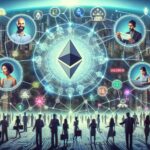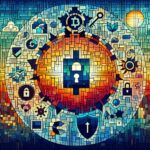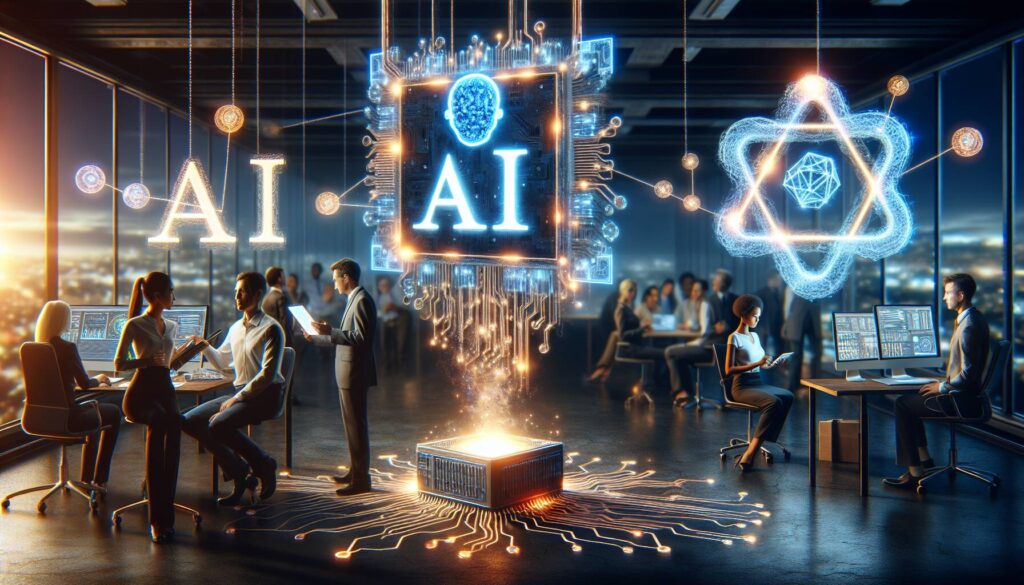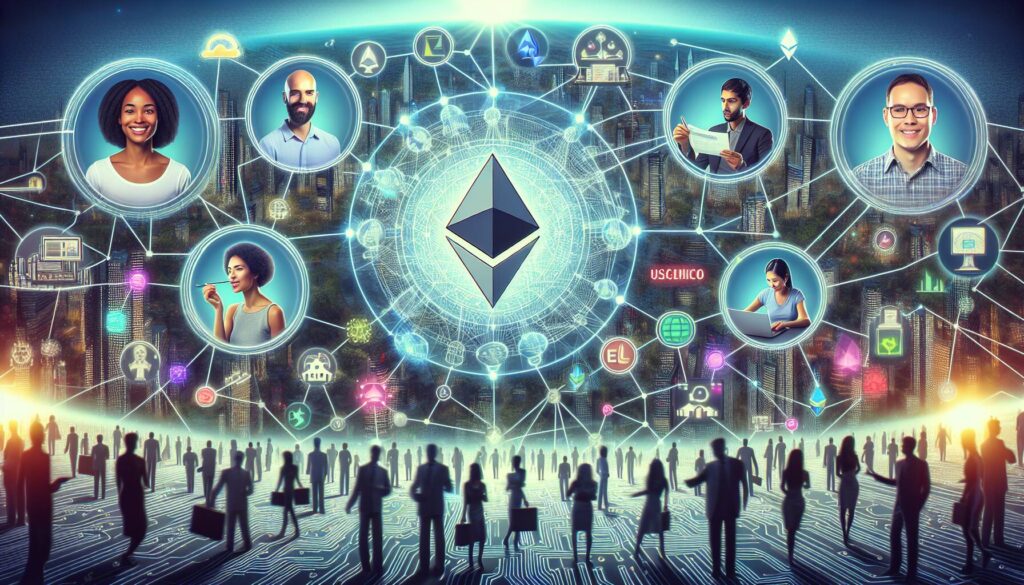A recent educational initiative, the AI2Web3 Bootcamp, has gathered participants from diverse backgrounds to explore the innovative fusion of artificial intelligence (AI) and blockchain technology. Founded by Matheus Pagani, CEO of Venture Miner, this bootcamp took place in New York City and focused on equipping attendees with the skills necessary to harness these powerful technologies to create new products and services.
Pagani’s vision centers around the idea that when AI and blockchain come together, the possibilities are not only groundbreaking but also accessible to everyone, regardless of their technical prowess. His comment on the importance of integrating varied perspectives highlights the bootcamp’s goal: to encourage collaboration among engineers, artists, and even journalists in order to unveil fresh applications that might otherwise remain hidden.
“We want to join brilliant minds from all backgrounds to come and work with AI and Web3,” Pagani stated, illustrating the significance of interdisciplinary teamwork in today’s tech landscape.
Among the innovative tools showcased, Coinbase introduced AgentKit—a framework enabling developers to create AI agents capable of autonomous interaction with blockchain networks. This tool promises to simplify and accelerate the development process for those looking to innovate at the intersection of AI and crypto, with incentive programs designed to spark creativity and experimentation.
With additional contributions from sponsors like Ora Network and Fleek, the bootcamp demonstrated that inspiring projects could originate from individuals at any skill level. Participants were encouraged to present prototypes blending AI and Web3, showcasing concepts like AI-driven assistants and applications aimed at enhancing the cryptocurrency landscape.
“I see the combination accelerating the research and development of so many different fields,” said participant Isayah Culbertson, emphasizing the transformative potential of these technologies when fused together.
The discussions at the bootcamp reflect a growing recognition of the exciting future at the crossroads of AI and blockchain. As industry leaders rally to democratize technology and make it more approachable, the vision for collaborative innovation in the cryptocurrency realm continues to gain momentum.

The Intersection of AI and Web3: Transforming Innovation
Understanding the integration of AI and Web3 technologies can significantly impact various professions and the way we interact with technology in everyday life.
- Descriptive Communication: The ability to convey clear visuals and concepts aids in effective communication, crucial for collaboration in diverse teams.
- Bias Awareness: Recognizing biases in AI outputs can foster inclusivity and improve the accuracy of generative models.
- Hands-On Learning: The bootcamp emphasized the importance of practical experience with AI and blockchain, leading to innovative problem-solving among participants.
- Rapid Prototyping: The combination of AI and Web3 enables quicker development of applications, encouraging creativity without the need for extensive technical backgrounds.
- AI Tools Accessibility: Tools like Coinbase’s AgentKit lower the barrier to entry for developers, facilitating the creation of AI agents that can autonomously interact with blockchain systems.
“What matters is bringing passionate people interested in solving problems together with the proper education.” – Matheus Pagani
- Empowerment Through Crowdfunding: Models like Ora Network’s fundraising for AI development promote community involvement and shared ownership of AI technologies.
- Innovative Applications: Prototypes developed during the bootcamp highlight the practical applications of AI and blockchain in everyday life, such as financial management and personal assistance.
- Collaborative Development: Participants from varied backgrounds showcased how interdisciplinary teams can accelerate technology adoption and development.
- Future Skills Relevance: The skills learned at the intersection of AI and Web3 will be applicable to a broad range of professions, from creative industries to finance and healthcare.
Exploring the Intersection of AI and Web3: A Comparative Look
The convergence of artificial intelligence (AI) and Web3 technologies is increasingly capturing attention within the tech community, showcasing how these innovations can create transformational products and services. Matheus Pagani’s recent AI2Web3 Bootcamp revealed significant insights into these advancements while highlighting unique competitive advantages and challenges faced by participants and developers alike.
Competitive Advantages: The dual focus on AI and Web3 opens up abundant possibilities for developers eager to leverage these technologies. Initiatives like Coinbase’s AgentKit empower coders at any level to develop autonomous AI agents that utilize blockchain networks, dramatically streamlining the learning curve and fostering inclusivity. Other companies, like Ora Network, are democratizing the AI landscape through crowdfunding models that encourage developers to contribute to artificial intelligence with financial backing. This participatory approach not only attracts diverse talents across various backgrounds but also encourages innovative problem-solving.
Challenges and Disadvantages: However, the rapidly evolving nature of both AI and Web3 can also create friction. Many potential developers, like Jackie Joya, may feel intimidated despite the accessible tools, fearing their novice status might hinder their contributions. Additionally, discrepancies in understanding and experience may create disparities among participants at bootcamps and other educational platforms, urging organizers to provide more tailored support for various skill levels. As companies like Ora and Coinbase push the boundaries of what’s possible, those without a foundational grasp of these technologies risk being left behind.
Target Beneficiaries and Potential Problems: The cross-section of AI and blockchain can significantly benefit a wide range of individuals, from engineers to artists and medical professionals, as they harness new functionalities for real-world applications. However, this same landscape may pose problems, particularly for industries slow to adapt. Traditional sectors might find themselves at a competitive disadvantage if they fail to explore the integration of these technologies, particularly as they become mainstream. This change underscores the need for continuous education and skill acquisition to remain relevant in an increasingly automated and interconnected world.
In summary, as innovators like Matheus Pagani guide the way into this intriguing new frontier, the conversation surrounding AI and Web3 continues to ignite passion, creativity, and, ideally, collaboration among those willing to embrace the future of technology. How this merge shapes the landscape—and who ultimately thrives—remains to be seen as more players enter the fray.
















